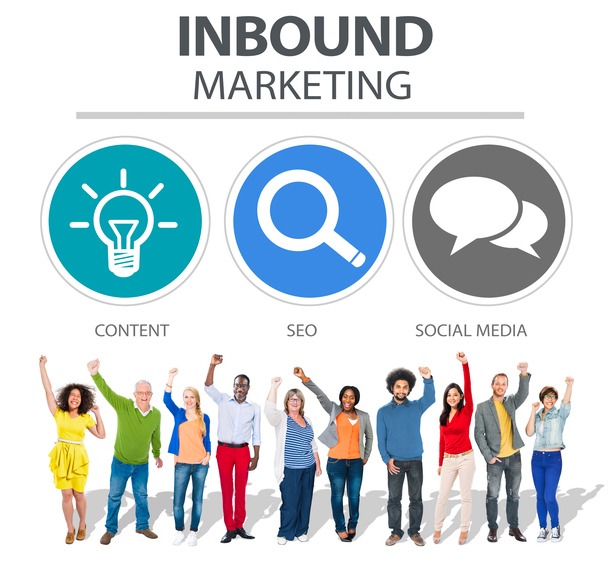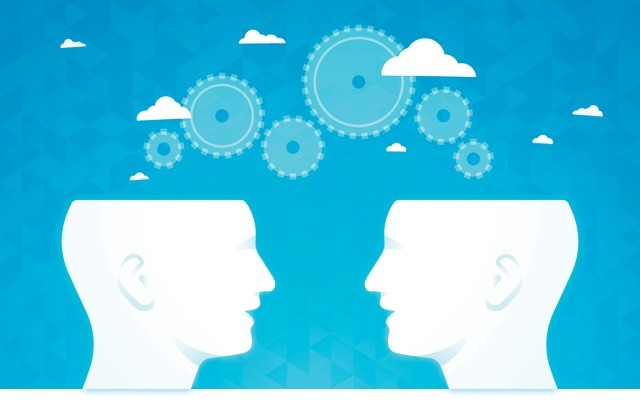Inbound marketing was developed in 1999 by Seth Godin, inventor of the ‘marketing permission’ concept. It is a marketing management strategy aimed at bringing customers to oneself rather than going out to look for them with traditional offline techniques such as print, broadcast or outdoor advertising, direct mail, cold-calling or, in the digital sphere, pop-ups and banner ads, which we refer to as ‘outbound marketing’. Inbound marketing is a powerful and effective methodology, suitable for B2B, B2C and nonprofits alike.
The difference between Inbound and Outbound marketing
Inbound Marketing: Inbound marketing is permission-based marketing. The goal is to engage prospective consumers and make them actually ‘want’ to be marketed to. This is done by providing them with relevant, high-quality content. This content may fulfill a need, answer a question or simply entertain. Any communication occurs using channels on which customers have given you permission to contact them.
Outbound Marketing: Outbound marketing is interruption-based marketing. Its premise is to find a medium with a large following and periodically interrupt, as when a tv series or football match breaks for commercials. The hope is that with some careful planning and a study of the demographics, a small percentage of the audience will listen to the interruption in the storyline and the marketing message will ‘get through’. The idea is that if you can find a large enough following, the small percentage of conversions might be worth the investment. However, this is increasingly like searching for a needle in a haystack.
 6 Steps to Inbound marketing
6 Steps to Inbound marketing
-
- Develop a successful marketing strategy
- Create & maintain an influential website or web presence
- Generate more traffic
- Convert traffic into leads
- Convert leads into sales
- Measure everything! And refine it, tune it, tweak it, then start the process all over again. In the words of W. Edward Deming: “You can’t manage, what you can’t measure.”
The 4 Stages of the Inbound Methodology

1. Attract your target visitors to your site with high-quality content.
Some of the most important tools for attracting the right users to your site are: blogging, SEO, and Social Publishing.
2. Once you’ve attracted website visitors, the next step is to convert those visitors into leads by harvesting their contact information.
Some of the most important tools for converting visitors to leads include: forms, calls-to-action, landing pages, thank you and contact pages
3. You’ve attracted the right visitors and converted them into leads, but now you need to close the deal and transform those leads into customers. Certain marketing tools can be used at this stage to make sure you’re closing the right leads at the right times.
Closing tools include: CRM, closed-loop reporting, Email and marketing automation
4. Retain customers
Tools used to engage customers, keeping them coming back for more include: Surveys, Smart Calls-to-Action, Smart Text, Social Monitoring.
Some figures
Data has proved that inbound marketing results in a better long-term ROI. For example, according to a DemandMetri survey, content marketing generates three times as many leads as traditional outbound marketing, and costs 62% less.
The most recent State of Inbound study from HubSpot found respondents prioritizing inbound over outbound by a ratio of 3:1 no matter the audience. It also suggests that Inbound marketing can double the average website conversion rate from 6% to 12%.
A survey by Monetate, suggests that 40% of consumers buy more from retailers who personalize the shopping experience across channels.
Some examples of Inbound marketing success stories
Colt International
Colt International is a family owned and operated industrial company specializing in climate control and ventilation. The company began using various inbound marketing strategies including blogging, analytics, and integrated platforms. In just three months of consistently applying inbound marketing strategies. Colt International achieved a ten-fold increase in their overall monthly traffic, grew social their media traffic from 0 to 900 visitors, and generated a 13% overall landing page conversion rate.
Coca Cola
In 2014, Coca-Cola launched its phenomenally successful identity-based ‘Share a Coke’ campaign. This allowed customers to produce their own personalized bottles of Coke. After launching in Australia it was rolled out worldwide.
It debrands the traditional Coke logo, replacing "Coca Cola" from one side of a bottle with the phrase "Share a Coke" with followed by a person's name. The campaign, which uses a list containing 250 of the country's most popular names (generic nicknames and titles are also used in some cases), aims to have people go out and find a bottle with their name on it, then share it with their friends.
In 2016, the company replaced people's names with lyrics from 70 popular songs including Lean on Me and We are the Champions. In 2017, the campaign returned to the US with a new variant; holiday destinations. Bottles of coke are now labelled with favourite summer holiday spots such as Hawaii, Ibiza, Barbados etc.
“Share a Coke” achieved 12 million media impressions, a 4% increase of category and a 7% increase in young adult consumption.
Financial analysts and advertising experts have used the success of the 'Share a Coke' campaign to remind marketers and advertisers of the need to personalise the communications message.
In a nutshell...
On one hand we have traditional marketing strategies that claim the right to market to consumers. These deliberately interrupt consumers and bombard them with unwanted messages. With consumers becoming ever more web-savvy and adept at blocking ads, we can see how this will prove to be a losing strategy in the long run. On the other hand, we have permission marketing which requests the privilege of marketing to consumers and gives them something in return.
This is a diametrically opposite approach. Once permission has been received, the marketer behaves respectfully and only relevant messages will be received by the consumer. In the long run, permission marketing builds relationships while interruption marketing builds only frustration.
Inbound marketing is a process and requires commitment and time investment but the returns are definitely worth it. When the messages received by your customers are anticipated personal and relevant you’re most likely to win a loyal and repeat business.
Sources :
https://fr.wikipedia.org/wiki/Inbound_Marketing
https://vtldesign.com/digital-marketing/inbound-marketing-vs-outbound-marketing/
http://www.digital-effervescence.com/approche/inbound-marketing/?gclid=EAIaIQobChMI8577roCa1QIVYrXtCh1Y3wtFEAAYASAAEgLioPD_BwE
https://www.impactbnd.com/blog/what-does-inbound-marketing-cost
http://www.ironpaper.com/webintel/articles/6-inbound-marketing-best-practices/
https://www.impactbnd.com/blog/5-inbound-marketing-success-stories
https://digitalmarketinginstitute.com/blog/2017-7-25-how-to-inject-personalization-into-your-marketing-strategy?utm_source=LinkedIn&utm_medium=Organic%20B2C%20LinkedIn%20Post&utm_campaign=Organic%20B2C%20LinkedIn%20Post%20-%20How%20to%20Inject%20Personalization%20Into%20Your%20Marketing%20Strategy
https://en.wikipedia.org/wiki/Share_a_Coke
Photo credit : Rawpixel via istockphoto.com


 6 Steps to Inbound marketing
6 Steps to Inbound marketing


Extremely interesting and a much better way to advertise. I wish all adverts were 'permission based'!